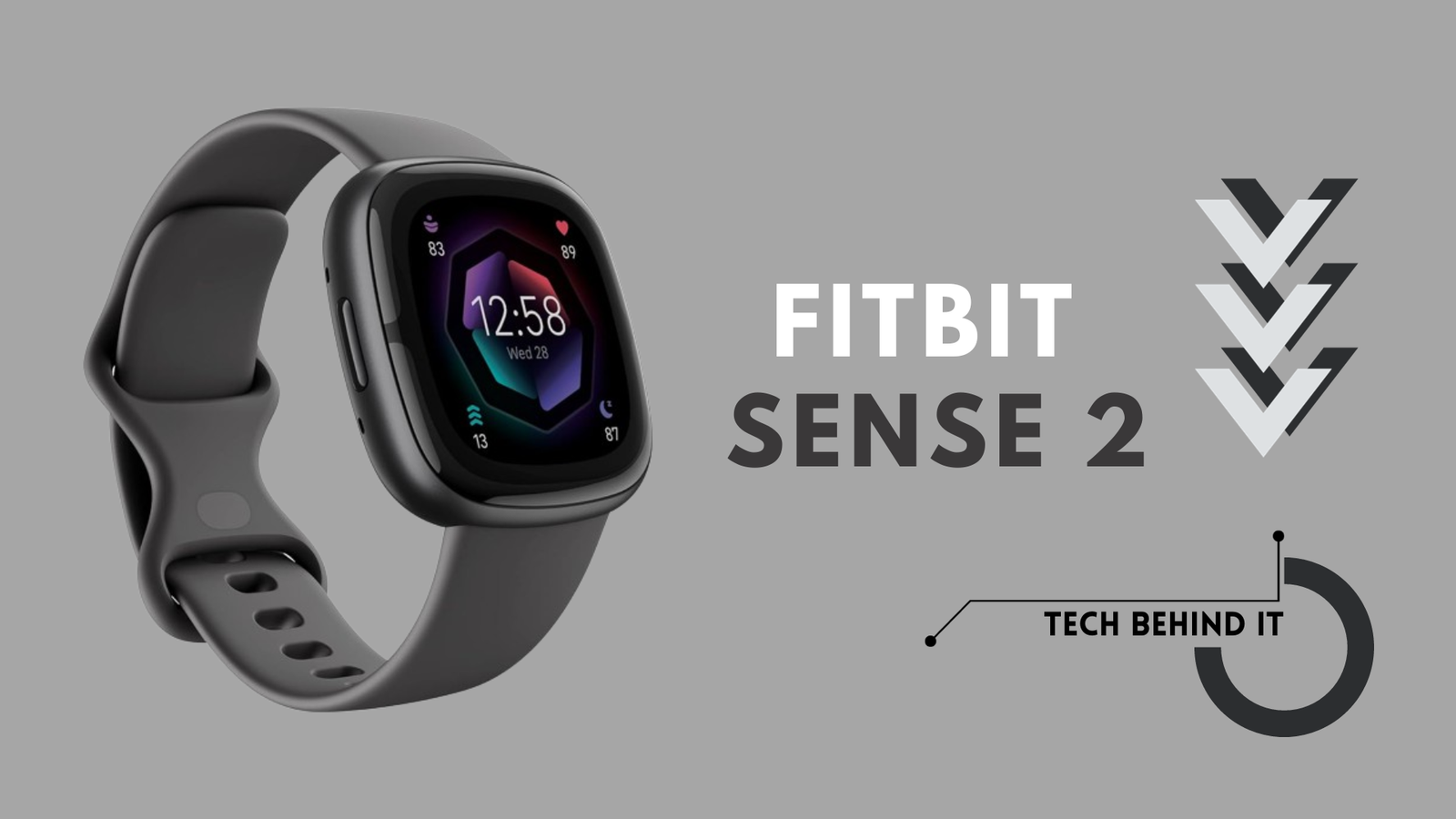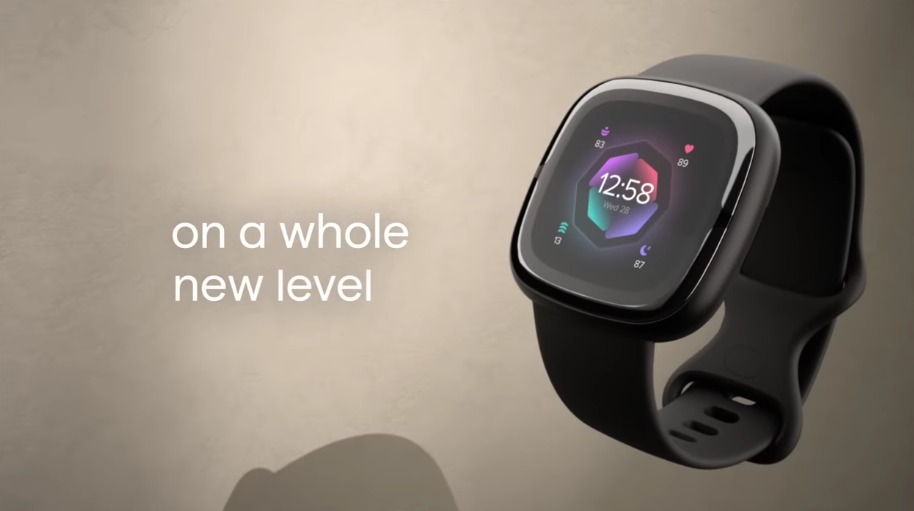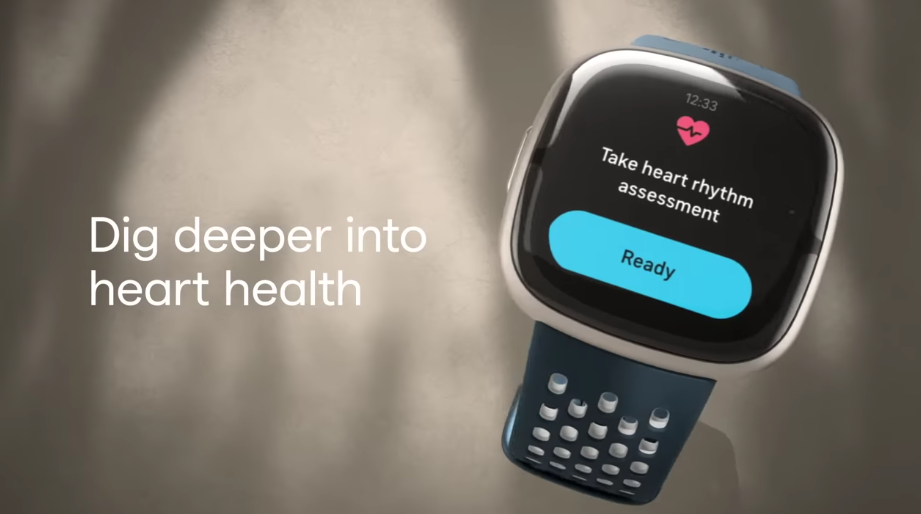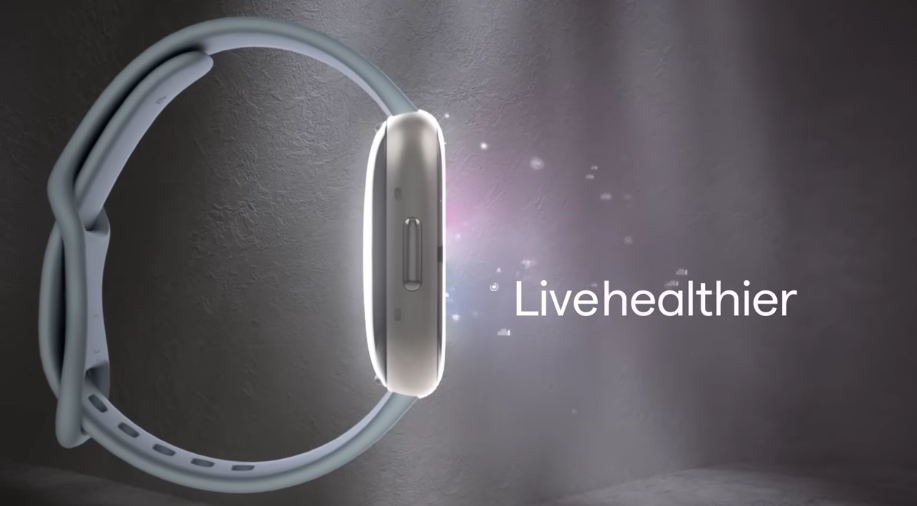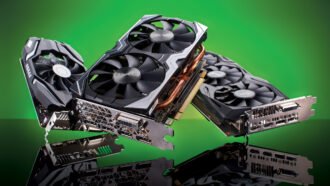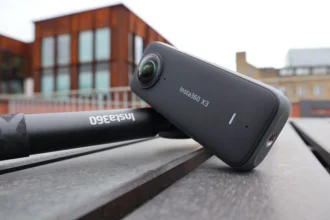Fitbit Sense 2: Elevating Your Fitness Journey with Advanced Features
- 1 Fitbit Sense 2 Specs
- 1.1 Cost and Availability of the Latest Health and Fitness Companion
- 1.2 The sleek, lightweight Sense 2 is comfortable on the wrist
- 1.3 Comprehensive health tools, including real-time stress tracking
- 1.4 A Sneak Peek into Advanced Health Tracking
- 1.5 Exploring the Performance Features of Fitbit Sense 2
- 1.6 Battery Life
- 1.7 Pros and Cons Of Fitbit Sense 2
- 1.8 Should I buy Fitbit Sense 2?
- 2 FAQs
Fitbit’s 2022 flagship watch is the Sense 2. It takes the original Fitbit Sense’s health-tracking focus, increases stress-tracking flexibility, and adds a tactile button instead of a fussy pressure-sensitive location on the side. Although an improvement, the Sense 2 feels inferior to the finest Fitbit in some key areas. This is no longer a smartwatch without third-party app support. The Fitbit Sense 2 loses music support—no playback and no control over phone music.
With new sensors, Fitbit’s most advanced health-focused wristwatch tracks moods and stress levels. Fitbit cut the pricing and deleted lifestyle apps to make the Sense 2 more wellness-focused and differentiate it from Google’s Pixel Watch ($349.99).
Its more responsive touch screen, a physical button, and somewhat better battery life make the Sense 2 more usable, but we loathe the translucent display border for the heart rhythm sensor. We recommend the $229.95 Fitbit Versa 4 for most consumers, which tracks breathing rate, heart rate variability, and skin temperature change. However, the Sense 2 is an excellent option if you’re ready to spend $70 on-demand atrial fibrillation evaluations and improved stress-management tools.
Fitbit Sense 2 Specs
| Phone OS Compatibility | Android, iOS |
| Watch OS | Fitbit OS |
| Display Size | 1.58 inches |
| Type | AMOLED |
| Estimated Battery Life | 5 Days |
| Phone Call Capacity | NO |
| Price | $299.95 |
Cost and Availability of the Latest Health and Fitness Companion
Top-tier Fitbit watches include the Fitbit Sense 2. Since Google owns Fitbit, it ranks above the Versa 4 and below the Pixel Watch. The watch costs $299.95/£269.99/$447AU at launch. Fitbit released the Sense 2 in September 2022, two years after the first. The first smartwatch with an electrodermal activity (EDA) sensor measured sweat electrical changes to detect stress response. This year’s key update is a new Body Response sensor that detects continuous EDA (cEDA) activity for all-day stress tracking with notifications.
The sleek, lightweight Sense 2 is comfortable on the wrist
My favorite thing about the Fitbit Sense 2 is that it’s designed to be ignored. The low profile and rounded sides make it comfy both day and night. Although lighter and slimmer than its predecessor, it has the same 1.58-inch AMOLED touchscreen display that works well in bright situations. In addition to touchscreen navigation, Fitbit incorporated a physical button for quick settings, apps, and shortcuts. The original Sense’s touch-sensitive panel was simple to push with a wrist bend accidentally. The tactile button is a wonderful practical upgrade, especially during exercises.
Comprehensive health tools, including real-time stress tracking
The Sense 2 is an excellent wearable for accurate activity tracking and health features. Other Fitbit watches detect blood oxygen, menstrual cycle, and heart rate variability, but the Sense 2 adds skin temperature sensors, ECG data, and real-time stress tracking. The fact that these capabilities make the Sense 2 an excellent wellness tool for more than just tracking steps or biking is noteworthy. The Sense 2’s built-in cEDA sensor measures your body’s stress levels in real-time and notifies you to lessen them. Breathing exercises or exercise calls can do this. It’s an unusual yet important function that shows how effectively your body manages daily stress.
A Sneak Peek into Advanced Health Tracking
Redesigning the Fitbit OS UI in the Sense 2 brings it closer to the Pixel Watch. Google now owns Fitbit, so these watches must get along—or at least as much as family members do. The change is good, too. View your daily stats by flicking left and right from the watch display. Fitbit basics include a daily stat summary, heart rate graph, weather report, and other items. On the Sense’s large screen, notifications look amazing when you flick up from the watch face. Sense 2’s applications menu is accessed via the side button. This contains stat screen data and clever extras.
One of the biggest takeaways from our weeks with the Fitbit Sense 2 is how much less of a smartwatch it is than top-end Fitbits from years ago. The corporation stopped supporting third-party apps. Fitbit last had a good app scene, but the original Sense had Spotify. That’s gone. The Fitbit Sense 2 features a speaker, so you may ask for something and hear a disembodied voice respond with visual feedback through the watch. Alexa only works with your phone because the Sense 2 has no Wi-Fi. The watch supposedly has Wi-Fi, but the firmware disables it. Most importantly, the Sense 2 lacks music support. Spotify support is gone, the watch can’t store music, and it can’t control phone music.
Exploring the Performance Features of Fitbit Sense 2
Though unimpressive, the Fitbit Sense 2 has the series’ health focus. This means it has an ECG and the company’s EDA. ECG inspects cardiac rhythm for atrial fibrillation. Interesting stuff; however, you must put your thumb and forefinger on the bezel for 30 seconds. The only problem is that it won’t work below 50 resting heart rate. Fitbit gets a pass because ours occasionally drops below 47-48bpm, which is unusual. Fitbit provides high and low heart rate notifications to compensate for active activity.
The watch will inform you if something is wrong, which may activate the Sense 2 ECG. The original Sense’s stress-tracking EDA sensor encountered issues. Stress is measured by sweat production, but on the old model, you had to sit with your hand over the screen, so your palm was over the sensors. The Fitbit Sense 2 is better than a fitness watch as an all-around health watch. To get the most out of it, join Fitbit Premium. This $9.99/£9.99 monthly fitness and wellness subscription includes video workouts, guided meditations, and meal programs. Although it doesn’t display watch stats, one of Fitness+’s best features, it’s an alternative.
Many stats are only available to Premium users. These include the complete “insights” section, which shows long-term numbers, Training Readiness, sleep restlessness, and snoring tendencies. Without these accessories, the Fitbit Sense 2 is useful. Not everyone needs a subscription. However, the app’s reminder that the watch’s full strength requires a monthly membership may frustrate some.
Battery Life
The Fitbit Sense 2 has certain flaws, but its battery life is far better than the Apple Watch SE. It looks and works like a smartwatch (until you want more advanced functions) but lasts longer. Fitbit claims the Sense 2 lasts six days between charges. We observed it lasted five days, but real-world stamina depends on GPS use. An hour of running usually reduces the charge level by 10% faster than passively counting steps. Wearable battery issues resolve when you charge your watch weekly instead of daily. If you utilize the Sense 2’s always-on display option, the battery will halve, giving you 2.5-3 days between charges.
Pros and Cons Of Fitbit Sense 2
| PROS | CONS |
| Minimalist, feather-light, cozy style | Unsupported third-party apps |
| Elevated responsiveness of touch screens | Reduced aesthetics from the original model |
| Big, brilliant display | |
| Battery life 5 days |
Should I buy Fitbit Sense 2?
Fitbit’s flagship wearable, the Sense 2, costs $299.95. It’s a tremendous health-focused smartwatch with a small, lightweight design, bright, quick touch screen, and five-day battery life. Activity, fitness, sleep, stress, body temperature, breathing rate, HRV, resting heart rate, skin temperature fluctuations, and SpO2 are easy to measure with Sense 2. In testing, its stress management tools, driven by a new cEDA sensor, helped me stay mindful, and its health metrics tracked my COVID-19 symptoms. This smartwatch doesn’t enable cellular calling or third-party apps. Fitbit Pay, Amazon Alexa, Google Maps, and Wallet are among the lifestyle add-ons on the Sense 2, but health and fitness are the main focus.
FAQs
How has Fitbit Sense 2 improved its health-tracking capabilities?
Users may be interested in health monitoring upgrades such as heart rate tracking, sleep analysis, stress management, and new health indicators.
Does Fitbit Sense 2 support third-party apps?
Buyers may ask about app compatibility, expecting more freedom and connection with third-party apps than the original Fitbit Sense.
What design changes can we expect in Fitbit Sense 2?
Users may want to know about design modifications, including materials, display technology, and aesthetics that distinguish the Fitbit Sense 2 from its predecessor.
Does Fitbit Sense 2 have better battery life?
Battery life is essential for wearables. Fitbit Sense 2 users may want to know about longer-use battery improvements between charges.

